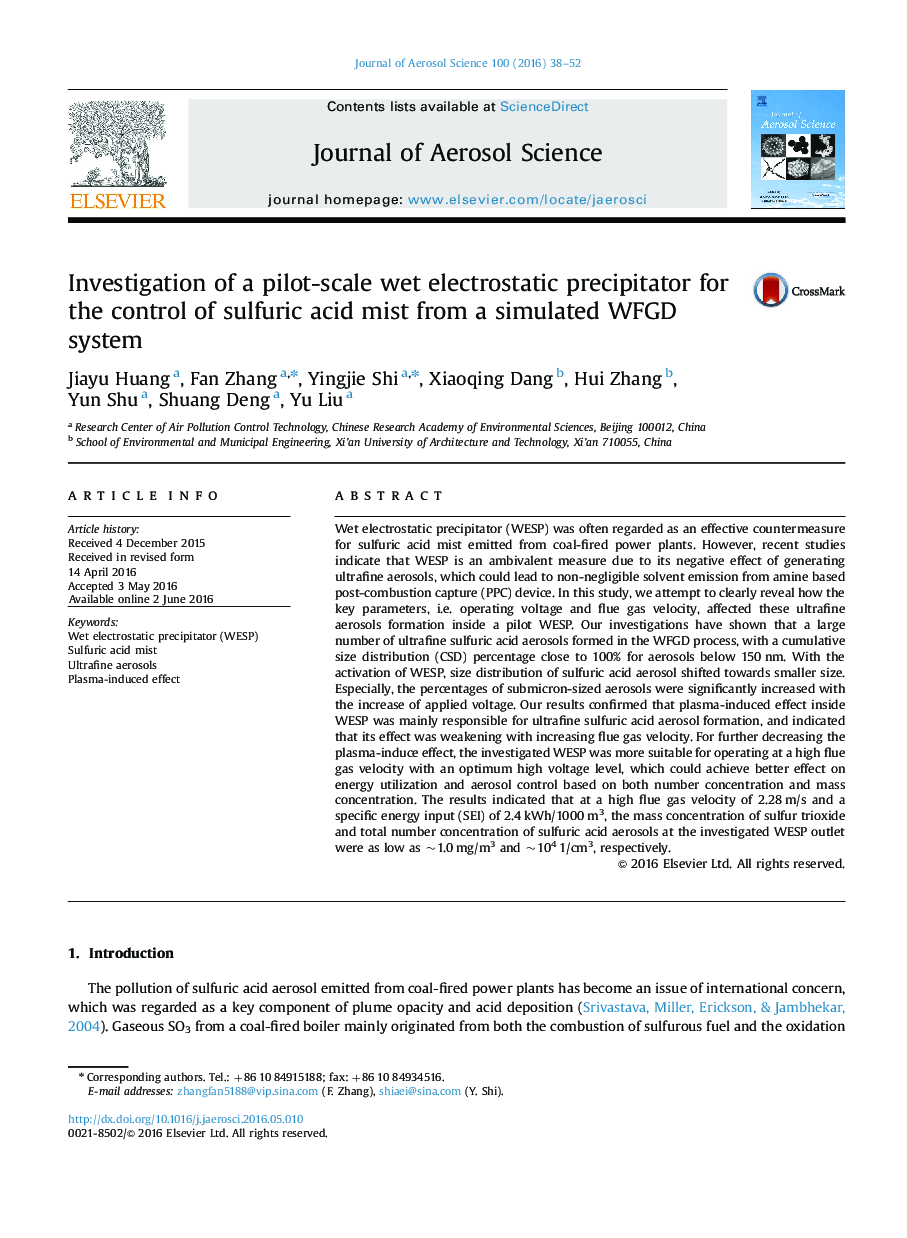| کد مقاله | کد نشریه | سال انتشار | مقاله انگلیسی | نسخه تمام متن |
|---|---|---|---|---|
| 6344253 | 1620723 | 2016 | 15 صفحه PDF | دانلود رایگان |
عنوان انگلیسی مقاله ISI
Investigation of a pilot-scale wet electrostatic precipitator for the control of sulfuric acid mist from a simulated WFGD system
دانلود مقاله + سفارش ترجمه
دانلود مقاله ISI انگلیسی
رایگان برای ایرانیان
کلمات کلیدی
موضوعات مرتبط
مهندسی و علوم پایه
علوم زمین و سیارات
علم هواشناسی
پیش نمایش صفحه اول مقاله

چکیده انگلیسی
Wet electrostatic precipitator (WESP) was often regarded as an effective countermeasure for sulfuric acid mist emitted from coal-fired power plants. However, recent studies indicate that WESP is an ambivalent measure due to its negative effect of generating ultrafine aerosols, which could lead to non-negligible solvent emission from amine based post-combustion capture (PPC) device. In this study, we attempt to clearly reveal how the key parameters, i.e. operating voltage and flue gas velocity, affected these ultrafine aerosols formation inside a pilot WESP. Our investigations have shown that a large number of ultrafine sulfuric acid aerosols formed in the WFGD process, with a cumulative size distribution (CSD) percentage close to 100% for aerosols below 150Â nm. With the activation of WESP, size distribution of sulfuric acid aerosol shifted towards smaller size. Especially, the percentages of submicron-sized aerosols were significantly increased with the increase of applied voltage. Our results confirmed that plasma-induced effect inside WESP was mainly responsible for ultrafine sulfuric acid aerosol formation, and indicated that its effect was weakening with increasing flue gas velocity. For further decreasing the plasma-induce effect, the investigated WESP was more suitable for operating at a high flue gas velocity with an optimum high voltage level, which could achieve better effect on energy utilization and aerosol control based on both number concentration and mass concentration. The results indicated that at a high flue gas velocity of 2.28Â m/s and a specific energy input (SEI) of 2.4Â kWh/1000Â m3, the mass concentration of sulfur trioxide and total number concentration of sulfuric acid aerosols at the investigated WESP outlet were as low as ~1.0Â mg/m3 and ~104Â 1/cm3, respectively.
ناشر
Database: Elsevier - ScienceDirect (ساینس دایرکت)
Journal: Journal of Aerosol Science - Volume 100, October 2016, Pages 38-52
Journal: Journal of Aerosol Science - Volume 100, October 2016, Pages 38-52
نویسندگان
Jiayu Huang, Fan Zhang, Yingjie Shi, Xiaoqing Dang, Hui Zhang, Yun Shu, Shuang Deng, Yu Liu,